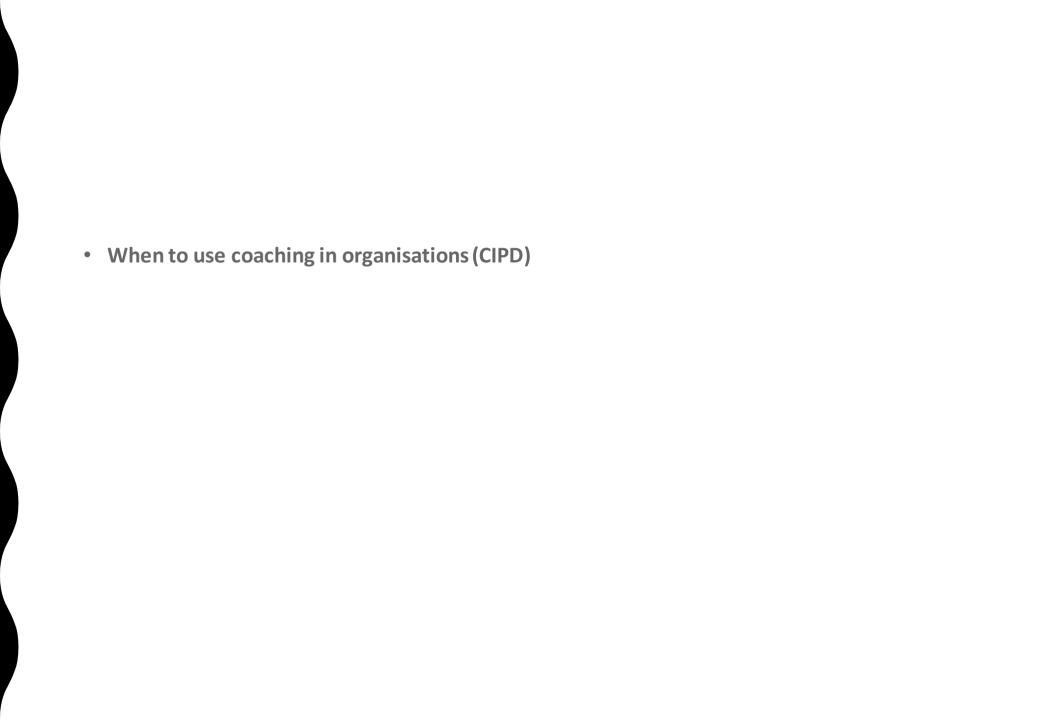
2 minute read
David Clutterbuck and David Megginson and Coaching Culture
• Six stages that lend themselves to a coachingculture.
• 1. Coachingis linked to business drivers, it is linked to high performance, strategy and processes.
Advertisement
• 2 Beinga coachee leads to feeling supported and it is a valuable activity.
• 3. Coach training should be available to everyone, allowing them to become qualified and have suitable follow up time.
• 4. Coachingshould be rewarded because it is regarded as investing in the employees who work with the manager in the team.
• 5. Have an allowance for growth, allow everyone to share in ideas and initiatives.
• 6. Senior management and line managers promote a coaching culture, while also understanding how it supports and empowers people.
Here is a quote from an article from Martin Bauer:
“If you want to be a leader, how successful you are will depend greatly on the culture where you work. “But wait,” you might say, “doesn’t it matter more that you have the ability to lead? That you have the traits that make a leader?” Perhaps, but if the culture you work in doesn’t allow you to practice those traits — or worse still, discourages those traits — they become irrelevant.”
• Daniel Goleman’s 6 Leadership Styles
• Commanding Leadership Style
• Visionary Leadership Style
• AffiliativeLeadership Style
• Democratic Leadership Style
• Pacesetting Leadership Style
• Coaching Leadership Style
Exploring and understanding coaching models (Noel Jimbai)
• Listening and observation are key skillsfor the business the skill of observation is partly to develop the ability to conversation, and to be ‘observing’ the conversation. It position, while never leaving the micro level of being present (Stout-aRostron, 2006c:152).
• Coaching models help us to understand the coaching systems perspective, and to understand the need for “structure” interaction between coach and client. Models help us to develop coach practitioners. They offer structure and an outline conversation and the overall coaching journey—whether months, a year or more. However, although models create which coach and client work, it is imperative that models as either prescriptive or rigid. The coaching conversation the coach. If the model is too prescriptive, it means the agenda to fulfil, rather than attempting to understand the

• A model represents a system with an implied process. It is a metaphor or analogy used to help visualize and describe the journey. Models systemically visualize or represent a process that cannot be directly observed. In other words, a model represents more than what you are looking at. If you can develop a model that encompasses the coaching conversation and the entire coaching intervention, you will begin to work with considerably greater ease within your practice.
• A coaching model is representative of what happens, or will happen, in the coaching conversation (micro) and in the overall coaching intervention or journey (macro). I recommend here simple models that can represent both the micro and macro coaching interventions.
��A tool is an instrument used to produce certain results; the tool is what you engage with as a coach inside the coaching conversation. For example, a hammer and nails are tools used to build a house; the tools you work with in the coaching conversation are profiles, assessments, questions, reframing statements, listening, question frameworks and models. A technique, on the other hand, is the technical skill, ability or competence you have developed to use that tool. For example listening is a tool, and active listening is a technique. This is where your experience, expertise and hours spent coaching come into effect. Often your tools and techniques fall into a specific part of your model’s process.







